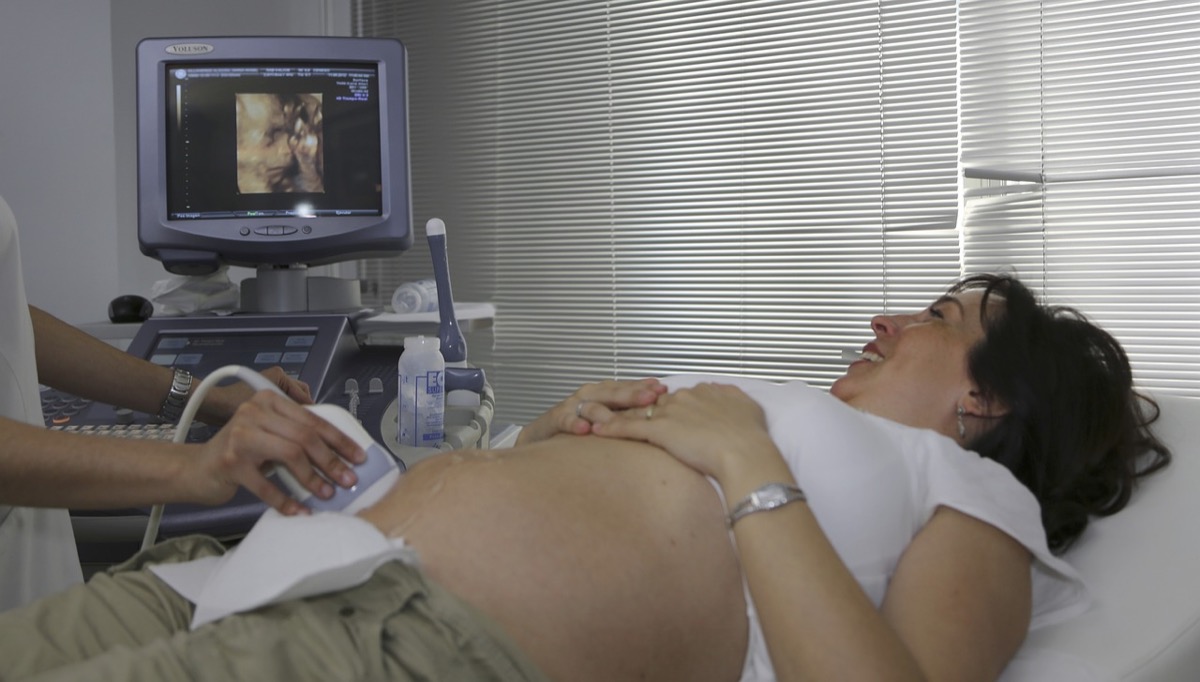Frame Rate Matters: Why 4D Ultrasound Motion Looks Blurry and How to Fix It
Few things excite expectant parents more than seeing their baby yawn, stretch, or suck a tiny thumb in real time. Yet if your 4D ultrasound video stutters or looks smeared, the magic fades fast. This in-depth guide explains exactly why motion blur happens, how frame rate controls temporal resolution, and the precise console tweaks that restore crystal-clear movement every time. Whether you run a single boutique studio or manage an expanding elective ultrasound business, mastering frame rate settings will boost client satisfaction, five-star reviews, and referral revenue.
The Physics of Motion Blur in 4D Ultrasound 
A moving target—your active fetus—demands fast image acquisition. Every ultrasound frame is built line by line; if movement outpaces acquisition, the lines record different positions of anatomy, creating smear. In 4D mode the system stitches successive volume sweeps into video. Low frame rates stretch the time between sweeps, so kicks or arm waves blur together.
Frame Rate vs Temporal Resolution
Temporal resolution describes how finely we sample time. A 30 fps scan shows the world in 33 ms slices; at 15 fps each slice spans 67 ms—long enough for a 24-week baby to move several millimeters. High frame rate equals high temporal resolution, reducing intra-frame motion and delivering crisp video.
Factors That Steal Frames
System architecture, depth, line density, focus count, and 4D render box size all affect frame rate. A deeper image travels farther, so echoes return later, slowing processing. Heavy smoothing algorithms such as HD Live or TrueVue add rendering time that drops fps. Understanding each factor lets you trade gently between image detail and motion clarity.
Why 4D Needs More Frames Than 2D
In 4D, multiple 2D slices create a volume. Each slice already sacrifices frame rate to cover width; stack dozens and the price multiplies. That is why many manufacturers ship default settings near 20 fps. Pushing beyond requires intentional optimization—yet it is absolutely achievable on modern platforms like the Samsung Hera W10.
Console Settings That Quietly Crush Your Frame Rate
Most motion problems start with an innocent tap: turn on speckle reduction, widen the FOV, or boost line density. Each adds computational weight. Below are the usual suspects.
- Depth too deep: Keep the uterus centered. Extra centimeters waste frame time.
- Excess render box: Shrink the 4D ROI until it hugs the baby’s head or torso.
- Multiple focal zones: In 4D, one well-placed focus usually suffices.
- Advanced lighting modes: HD Live Silhouette looks stunning in stills but can halve frame rate in motion.
- High persistence filtering: Persistence averages frames; lower it or switch off to regain fps.
Perform a quick experiment: freeze the image, note frame rate, toggle each feature, and watch the fps readout. You will quickly learn which adjustments do the most damage on your specific scanner.
Optimizing Frame Rate Without Losing Image Quality
The goal is balance. Parents want silky motion but also clear facial features. Use the following hierarchy whenever you fine-tune.
- Start shallow. Set depth to the smallest value that keeps anatomy on screen.
- Trim the ROI. Smaller volumes process faster; crop away amniotic void.
- Limit focus to one zone. Place it at the structure of interest.
- Lower line density slightly. Each decrement can return several fps.
- Switch to medium-level smoothing. Instead of maximum speckle reduction, use moderate filtering and increase receiver gain to compensate.
- Test advanced lighting last. Add HD Live only if fps stays above 25.
With practice you will reach a sweet spot—often around 28-32 fps—that keeps motion lifelike while preserving the detail parents will frame on their nursery wall.

Step by Step Tuning on the Samsung Hera W10 and Similar Systems
1. Establish Baseline
Switch the console to 4D live view and note the displayed frame rate. Avoid touching any presets until the baseline is recorded.
2. Resize the Volume Box
Use the trackball to shrink the width and height around the baby’s head. Watch fps climb several points immediately.
3. Adjust Depth and Gain Together
Reduce depth in one-centimeter increments. As the signal brightens, lower overall gain to keep soft tissue balanced. The Hera’s Auto-Optimize can assist but manual tweaking gives finer control.
4. Drop Line Density
On the Hera W10 this setting lives under Advanced 2D. Changing from high to medium typically adds 5-6 fps with minimal resolution loss.
5. Refine Focus Position
Ensure only one focus knob is active and align the arrow just below the area of interest—often the tip of the baby’s nose.
6. Test Lighting Effects Carefully
Toggle HD Live and rotate the virtual light source. If fps dips under 25, back off. For marketing clips prioritize motion; still captures can always use deeper rendering.
Need hands-on coaching? Ultrasound Trainers has helped hundreds of sonographers master these console nuances. Our private training packages include live frame rate drills and real patient scanning sessions. Call (877) 943-7335 or email Info@UltrasoundTrainers.com to schedule an onsite intensive.
Real World Success Stories
First Glimpse KY struggled with choppy motion that dampened gender-reveal excitement. After a two-hour virtual consult the owner trimmed depth, reset focus, and captured 30 fps footage that doubled social media engagement. “Our packages now sell out every Saturday,” she reports.
In Phoenix, an Ultrasound Franchise chain applied the same tweaks across ten locations. Consistent crisp videos improved brand cohesion and pushed average Google review ratings from 4.6 to 4.9. The chain has since expanded, a testament to the business value of technical mastery.
Business Impact: How Sharp Motion Converts Browsers into Bookings
High-frame-rate clips outperform still images on Instagram Reels by 3X according to internal analytics across several elective ultrasound studios. Parents share fluid kicks and stretches, driving organic reach and new client inquiries. That free marketing reduces the cost of starting an ultrasound business and accelerates return on investment.
Studios that feature smooth 4D action in ads report higher upsell rates to Keepsake Baby Ultrasound packages, HD Live edits, and heartbeat animals. Clients trust the quality they see on screen; when motion looks television-grade they willingly pay for longer sessions and printed frames.
Frequently Asked Questions
Does raising frame rate lower spatial resolution?
Only if you reduce line density or ROI size aggressively. Moderate adjustments restore motion clarity without noticeable pixelation.
What is the minimum acceptable fps for 4D marketing clips?
Aim for at least 25 fps. Anything lower looks choppy on social feeds and large clinic monitors.
Can older 4D probes reach modern frame rates?
Yes, but you must compensate with tighter ROIs and minimal filtering. Even decade-old systems can reach 24 fps when properly tuned.
Will high frame rate increase thermal index?
Frame rate itself does not raise acoustic output. However a tightly focused beam may concentrate energy. Always monitor TI and follow AIUM ALARA guidelines for patient safety.
Key Takeaways
- Motion blur stems from low temporal resolution; raising fps is the cure.
- Depth, ROI size, focus count, and heavy rendering filters are the main frame rate killers.
- Optimizing settings on the Samsung Hera W10 can boost fps into the 30s without sacrificing image detail.
- Crisp 4D motion fuels five-star reviews, social shares, and higher-value packages in any elective ultrasound training program.
Are you ready to banish blurry scans for good? Share your challenges in the comments below and tell us what frame rate wins you achieve this week. If you need personalized coaching, Ultrasound Trainers is one call away.
© 2025 Ultrasound Trainers. Phone: (877) 943-7335 – Email: Info@UltrasoundTrainers.com
Learn More About Ultrasound Training Learn More About Opening an Ultrasound Studio













